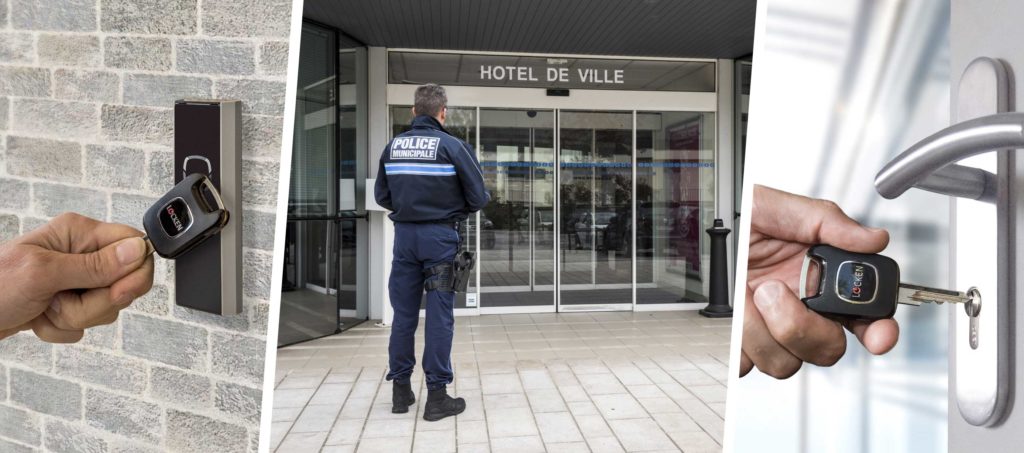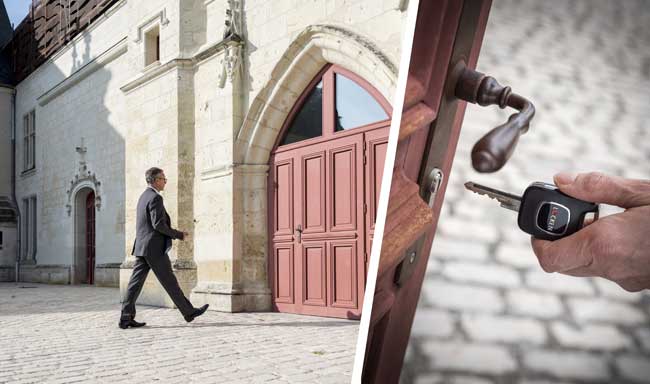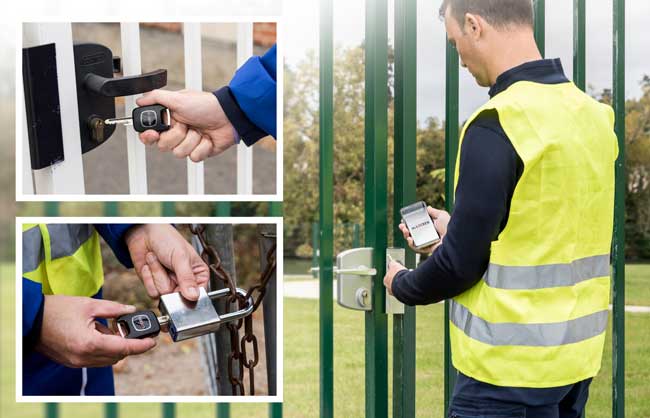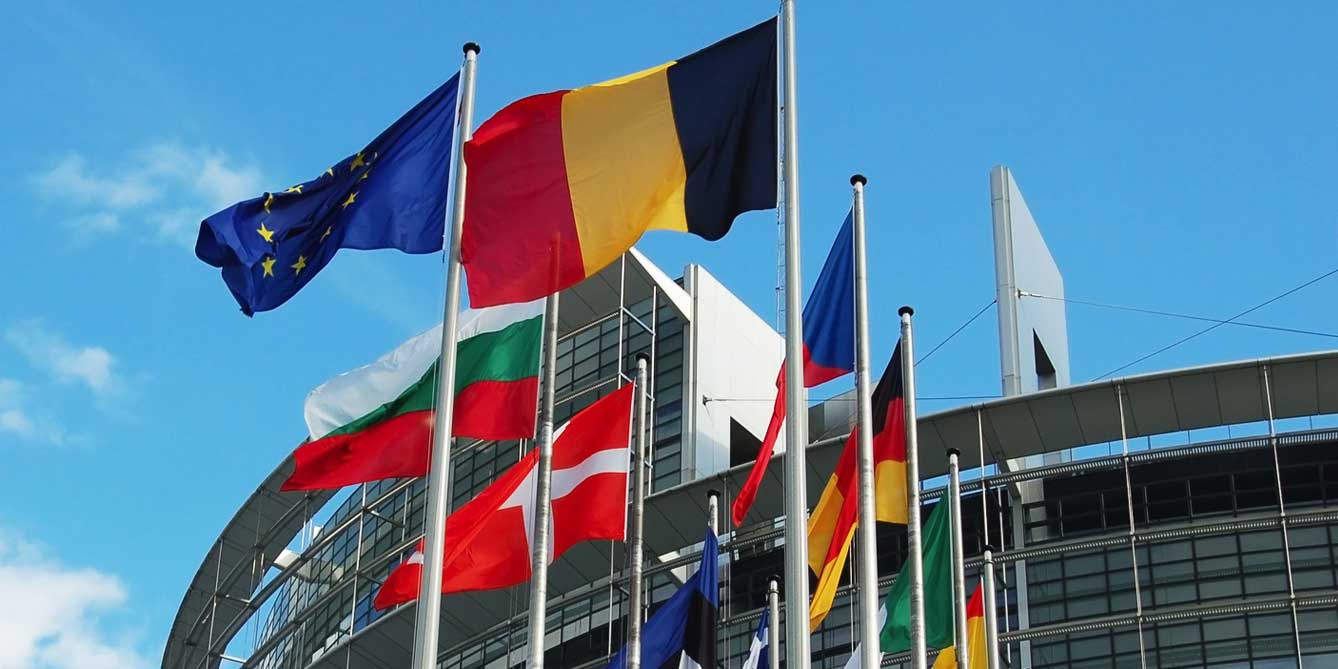Saint-Avertin, a dynamic city of 15,000 inhabitants located on the right bank of the Cher, is part of Tours’ agglomeration, the latter being twenty times larger.
It was the burning of a gym, in 2010, and the requirements of insurance companies, that led the city to reflect upon the security of its various implementations. In addition to the town hall and municipal police headquarters, it manages a nautical stadium, several gymnasiums and a media library installed within a listed Renaissance castle, Cangé, whose grounds host many events.
Municipal officials had two objectives: to reinforce security and streamline management, but they wanted to avoid further restricting access, especially to sports facilities that are open to associations and attract a significant number of members.

The electronic key: a concentrate of technology for a simple and effective solution
The city is therefore using Locken since 2010. It was won over by this solution that combines a software rigor, an easy cylinder installation and an innovative nature of the electronic key. Electronic cylinders are an easy way to replace the need for wiring or works to existing mechanical cylinders; the smart key brings to them both energy and access rights solutions that trigger the opening. The head of the municipal police, Mr Laurent Lacour, explains the operational reasons for this choice:
“We faced a relatively complex problem because of the diversity of sites: public spaces, offices, sports facilities, and even a castle dating back to the Middle Ages listed in the inventory of historic monuments! They are all fitted with controlled-accesses, both indoors and outdoors. It was an inextricable puzzle: Keys and key chains were handed over to dozens of people, to club officials and cleaning companies. But the keys were not handed back, they got lost. To simplify their lives, some even ended up leaving the most frequented entrances open.
The Locken solution, with its management software, finally allowed the municipal police to have a comprehensive overview, and all participants to be more rigorous without being affected in their activity, quite the contrary.
Through experience, new uses are being discovered. The music festival organized at the castle of Cangé requires us to have movable barriers to secure the space around the stage: to keep them locked, we plan to equip them with Locken locks that will allow us to expand the use of our electronic key. This will strengthen the existing security system based on the presence of security officers.”

Towards greater performance: the magnetoinductive key
In 2017, the city chose to acquire the new Locken Bluetooth contactless electronic key and the MyLocken application. “This is a very positive development for us, says Christophe Fort, deputy head of the municipal police in charge of access management. Firstly, this new induction key is much faster than the previous one. It is spectacular, and very appreciable in everyday life: as soon as the key is inserted, the cylinder opens right away. This happens without regard of the dust and foreign bodies that can accumulate in the cylinders, since they function without electrical contact with the key.
Most importantly, the MyLocken app greatly enhances system security. City agents have the application on their Smartphone, whether it is their personal smartphone or that of service. For staffs who do not have a Smartphone, a number of DAR – access rights distributors, are installed in strategic places such as the entrance of offices: New generation keys, continues Christophe Fort, have another crucial advantage for our municipality. The system is indeed compatible with the use of badges, and the keys are also equipped with an RFID module that acts as a badge. If it has been excluded to entrust an electronic key to each member of sports associations, it is nevertheless possible, because of their lower cost, to give them badges. In the long run, this represents several hundred or even thousands of people who will have access to the equipment while respecting the safety of the whole.
The combination of solutions does not prevent the supervision from remaining perfectly effective. This is partly because the software carefully manages the accesses, and makes it possible to know which badge triggered this or that opening, and partly because the badge reader specific to a building is only engaged if a manager has previously unlocked access to the site with his electronic key. Members of the swimming association, for example, will only be able to access if a pool manager is already present on the premises.”

Specific usages: alarms and security
Two other examples will help understand how the Locken solution improves the efficiency of existing security systems.
In Saint-Avertin, the alarm boxes installed in the various municipal buildings are accessible only to users of electronic keys. Activation and deactivation of the alarm are therefore reserved for holders of authorizations granted by the Central Control System, Locken Smart Access (LSA).
The Locken solution also allows a better fluidity in the management of subcontractors. Two extreme cases can be taken as an example: an electrician who comes to make a punctual intervention would be given a license key for a day, or even a morning or an hour. By contrast, the security firm mandated by the city to supervise the premises has extensive rights to all entries and for an indefinite time, but these rights can be revoked at any moment.
Development projects
In addition to the 150 access points already equipped, the city, which intends to open the area of Cangé to new activities for youth, will rehabilitate and equip its outbuildings with access control. The equipment of a new gymnasium is also planned.
These perspectives show the operational managers’ satisfaction of the solution, but also that of the municipal police, and daily users – elected officials, agents of the municipality and service providers.

35 Bd Georges Clemenceau 92400 Courbevoie – France
Tel: + 33 (0)1 56 37 00 50
info@locken.fr – www.locken.fr

